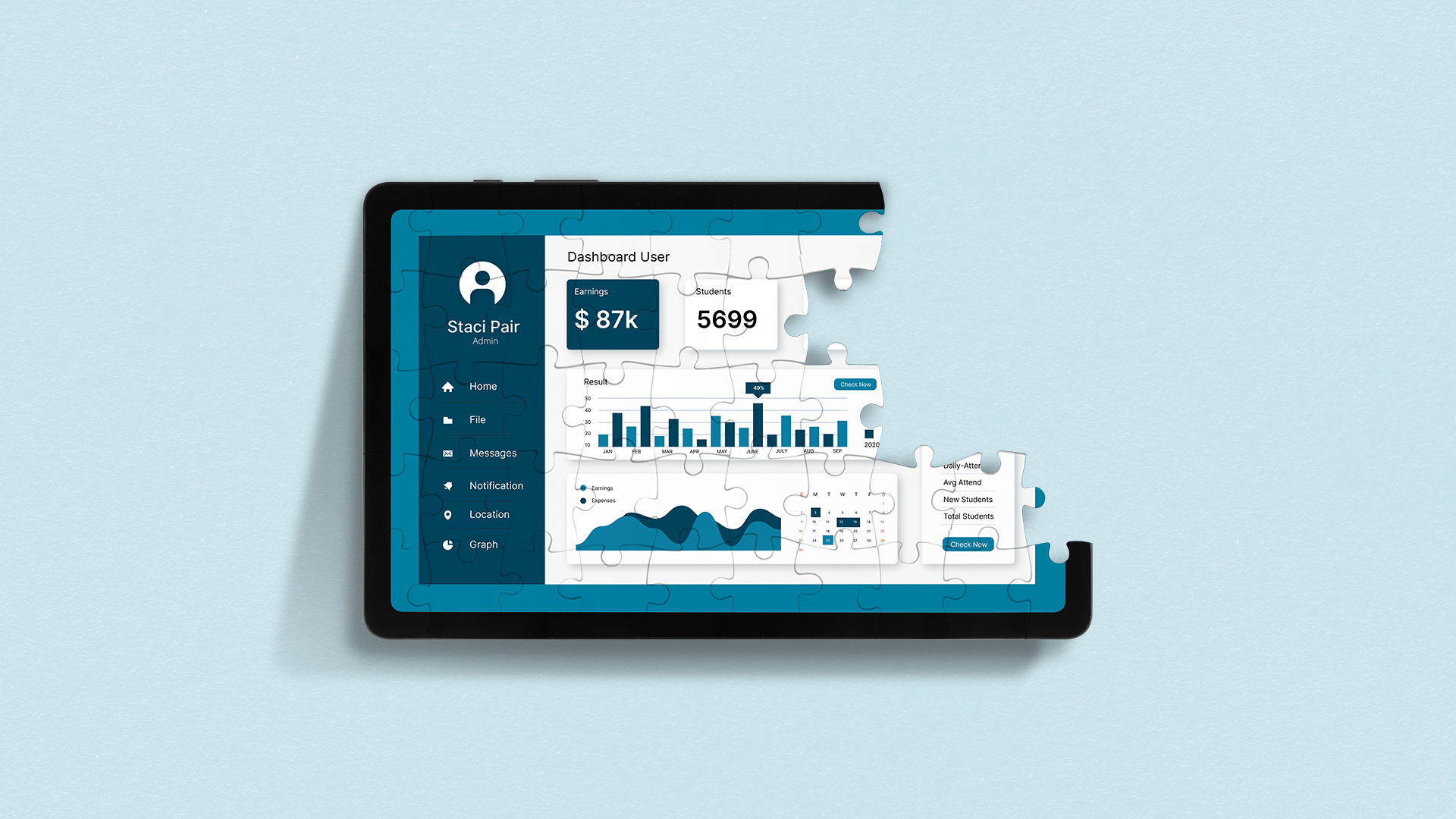You’re ready to end your OPM contract, and for sound reasons. The right approach should save you millions of dollars, give you back control of your program(s), and allow you to merge your online and on-campus models into something more responsive, resilient, and efficient. Even so, you approach this change with some trepidation, aware that missteps will be financially and reputationally costly.
In this white paper, we’ll discuss:
- Negotiating an end to your OPM revenue share contract.
- Upgrading your learning content and LMS.
- Building a marketing engine to ensure your enrollment is flat or up.
- Integrating your online and on-campus operations.
- Upgrading your technology and learning design.
- Using partners to finance the transition and support the new operation.
You can do these things without the assistance of an outside partner. However, we believe that Noodle can help you reduce the stress and expense of this transition while building better and larger programs. We explain how in a separate white paper.
Negotiating an end to your OPM revenue share contract
Traditional OPMs may be willing to negotiate an early termination of your contract, particularly when it generates some short-term benefit. Following this checklist eases negotiations:
- Legal Consultation: Your legal counsel should scrutinize the terms of the existing contract, including termination clauses, intellectual property rights, liabilities, notice periods, and any other legal stipulations. Such contracts often include “tail” provisions requiring continued payments after the termination of the agreement. Determine the exact amount of these payments.
- Review performance: Your contract may include performance standards. Has the OPM met them, and what are the consequences for not doing so?
- Intellectual property rights: If you terminate, who owns the course content that the OPM developed? If it’s you, in what time frame and format will it be delivered?
- Negotiation: Don’t shy away from negotiating terms with your OPM. As regulators, the Department of Education, and investors attack the revenue share model, OPMs may be as anxious to terminate as you are, especially towards the end of each of their fiscal quarters.
Learning environment transition
Transitioning to a new platform and quality level requires an indeterminate amount of work. Determine it.
- Evaluate your current LMS features and capabilities: Assess the features and capabilities of your existing Learning Management System (LMS) and potential alternatives. Consider flexibility, scalability, user-friendliness, compliance with accessibility standards, and ease of integrating with other institutional systems.
- Audit existing course materials: Assuming you own your course materials, you may need to migrate them into a new learning platform (a superset of your LMS). Conduct a thorough review of course materials to identify potential issues and evaluate the costs and opportunities of an upgrade.
- Plan for the migration of course content: This process involves a careful sequence of content transfer, timelines, testing, and potential adjustments to ensure that all content, including multimedia elements and interactive components, transfers effectively.
- Training and support: Arrange adequate training sessions to familiarize faculty and administrative staff with the new platform. Establish continuous support to ensure all users are comfortable navigating and using the new systems.
Building a marketing engine that promotes increased or flat enrollment
Once you give notice to your OPM, their incentive to market your program will disappear. Prepare to assume marketing responsibilities before that moment arrives, then ramp up your efforts as you learn which strategies are most effective.
- Data: Understanding what already has and has not worked will save you years of trial and error. What marketing data are you contractually due, and in what form can you get it? For example, will the OPM share information on which keyword purchases have proven most successful?
- Marketing: Approaches that worked a few years ago are no longer effective. In a fiercely competitive marketplace, every facet of your marketing effort must be compelling: your websites and landing pages, messaging, digital marketing, and, when appropriate, employer outreach.
- Recruiting: You need to build—or partner with—a recruiting team. Since 60% of contacts come in outside business hours, your team must be available at least 12-16 hours per day, six days a week. Note: It is more important to treat existing prospects well than to generate new ones.
- Former prospects: Gaining access to your current prospects is surprisingly unimportant. A prospect’s shelf life is measured in weeks, not years. Most will have found another path by the time you reach them.
Integrating your online and on-campus operations
Ending your OPM relationship creates the opportunity to rethink the wall between your on-campus and online efforts. Integrating the two requires flexible, responsive, and efficient systems that can handle marketing, recruiting, learning design, technology stacks, and support systems for on-campus, online, and blended offerings. To achieve this level of agility, you need to consider the following:
- System design: Schools typically structure their online and on-campus programs differently—for example, in the number of starts each year or the required courses. You must think through those differences and decide how to resolve them.
- The campus: Most online students live within fifty miles of your school. How do you build community and bring them to campus without requiring them to attend classes?
- Marketing and recruiting: The most efficient marketing and recruiting efforts are fully coordinated, with each person and campaign focused on students’ wants and needs. Combining your internal team with the right partner is critical to making this work.
Upgrading your technology and learning design
Your OPM undoubtedly had a solid technology infrastructure that incorporated a CRM, a learning stack that flanked your LMS, and a management layer to gather and benchmark data. Take advantage of the chance to replace their tech with something that also services your campus-based students.
- Learning design: You may have to move your content from the OPM’s LMS to your own. This is an opportunity to enhance your technology to see whether it can also support classroom instruction. What should you budget, and how long will it take?
- CRM: Given some students’ distance from campus and the pace of the online learning marketing space, is your CRM sufficient to handle both modalities?
- Learning platform: The LMS is only a part of what you need to support your online and hybrid learners. Where are your gaps, and how should you fill them?
Using partners to finance the transition and support the new operation
Many contracts with traditional OPMs have tails: money you owe after the contract ends (often, this represents the OPM’s revenue share for students or prospects they recruited to your school). You may have a two-year obligation under such an agreement, during which time you will also have to fund recruitment of new learners. Thoughtful planning can make this easier:
- Exit costs from current contract: This analysis should start with the explicit costs of exiting your existing contract.
- Comprehensive financial assessment: Conduct a thorough analysis of the current and expected costs associated with your transition. Include all aspects, from the cost of the contract, technology, content migration, and support services to the indirect costs of training, personnel, and potential disruptions during the transition. Develop detailed financial projections of cash flow, including sensitivity analysis of potential fluctuations in student enrollment.
- Negotiation of terms: The OPM has significant financial and reputational incentives to negotiate these terms.
- Financing: Working with our financial partners at J.P. Morgan, Noodle can create a synthetic revenue share that uses low-interest debt to make payments as negotiated, taking a share of revenue each term to pay off that debt. This should effectively create a soft landing for the contract.
New partners
Few traditional universities have managed the demands of an agile campus on their own, but partnerships can go wrong quickly. A few principles may prove helpful:
- Internal teams: A slow-changing analog world rewards efficiency. A digital world rewards agility. Taking everything in-house is an understandable reaction to the excesses of OPM contracts, but the overwhelming majority of universities have found that approach to be expensive and ineffective.
- Multiple providers: Some specialists do an excellent job at a low fee. However, the cost of integrating numerous providers is surprisingly high. Noodle tries to offer competitive services in each discipline, but our strength is the alignment between services—whether provided by the university or our teams.
- Bundled services: On the other hand, no outside firm is perfect. The best partner is one whose parts are separable; if a firm is doing a great job in technology and learning design, it should be able to work with other marketing firms if they prove more efficient.
- Contract review: When considering contracts with new providers, check for (a) flexibility in the contract terms to allow for adjustments based on future needs; (b) transparency in the form of real-time data; and (c) efficiency and network effects (i.e., How does an outside provider leverage its reach to help you?
Communication strategy
Finally, various university personnel must participate in the decision to replace a traditional OPM. A comprehensive communication strategy ensures that all stakeholders stay informed and feel valued throughout the transition.
- Identify stakeholders: It’s crucial to recognize all parties impacted by the OPM transition. These typically include faculty, administrative staff, IT teams, and potentially the university’s board of trustees or other decision-makers. Each group will have different needs and concerns regarding the transition.
- Develop a communication plan: Once you’ve identified the key stakeholders, devise a plan outlining when and how to communicate with each group. Options include emails, town hall meetings, webinars, and one-on-one discussions. The plan should consider the communication sequence, ensuring that internal stakeholders are informed before information becomes public.
- Establish a feedback loop: Your communication strategy should not be a one-way street. Establish channels for stakeholders to voice their concerns, ask questions, and provide feedback. Options include town-hall Q&A sessions, dedicated email addresses, or online forums.
Noodle
We have worked with several universities as they shifted away from traditional OPMs. A smooth, crisis-free transition can make a difference in reputation, enrollment, retention, and finance.
Through our strategy team, Noodle can help you plan each part of the transition. We can assist in auditing current learning content, evaluating your technology, making sure marketing and recruiting teams step up to maintain enrollment, and properly budgeting and financing the initiative. In short, Noodle can help safeguard the quality of the education you provide while minimizing disruptions to stakeholders.



